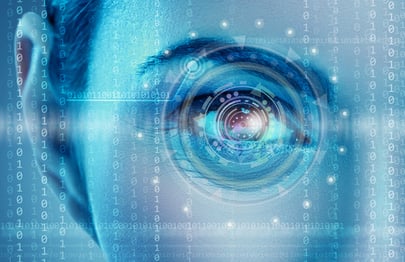
With 2.2 percent of payroll expenses coming from "buddy punching" or employees being clocked in by a co-worker to avoid an absence or late arrival, businesses are recognizing the need for more stringent employee authentication methods. Biometric verification is a growing sector of workforce management solutions and one you should consider to reduce payroll fraud. These four biometric authentication methods are being implemented nationwide and can help your business grow.
Fingerprint Systems
Fingerprint systems are the mostly wide used of all the biometric authentication methods, mainly because the technology is accurate and relatively low cost compared to other methods. A fingerprint system is a two-step system. Employees are entered into the system by taking a preliminary scan of one or more fingerprints. This data is entered into a biometric verification software to reduce the entirety of the fingerprint into a set of unique data points. When the employee "clocks in" to work, they place their finger onto a reader and the software can recognize the code. Since this system is well developed, there's less error than other systems for misidentification or non-identification. Fingerprint systems provide the best value, require the least space for readings, and are the most useable methodology for a wide range of businesses.
Hand Geometry Systems
Following closely behind fingerprint systems, hand geometry systems are one of the more widely used biometric authentication methods which takes the entirety of the employee's hand into account when developing a unique code for identification. Unlike fingerprint systems, hand geometry measurement units take up more space and may be less accurate than the well-developed fingerprint systems, but provide more data points and are much harder to fool than other systems. For higher security with the potential drawback of less development, a hand geometry scanner is a good choice for businesses.
Retinal Scan Systems
Once relegated to the pages of spy novels, retinal scans are now a usable way to properly identify employees. Retinal scan systems take a scan of the retina or the iris for identification. Retinal scan systems are preferred by some sectors because it's a much harder system to fake. While a wax mold of a fingerprint may fool a scanner, it's quite a bit harder to duplicate the veins behind the eye. While this system may seem cutting edge, it still has a long way to go in development. These scans are often slow and inconvenient for businesses that employ a large number of employees. In addition, the technology and software to run it is expensive. While high risk sectors may consider retinal scan systems to increase security, it's a clunky system for other businesses.
Facial Recognition Systems
Facial recognition systems are gaining headlines in the news and are being employed by some government agencies to tracking down criminals and helping victims. This technology is alluring because it is non-invasive and doesn't require so much as a word, just an employee's presence. Still, the technology is in development. A changed hair color or broken nose can result in security playing a guessing game of whether they're talking to the right employee. While advances in facial recognition are on the horizon, this technology is one to watch, not necessarily one to implement.
Biometric authentication methods are becoming the industry standard for reducing buddy punching. These methods require the presence of the employee to clock in or out for the day and are harder to fool than a "private" PIN number or employee badges. When researching automated biometric authentication methods, stick to fingerprint or hand geometry scans but keep an ear open as technology continues to evolve.
